3/29/1912 - The infamous "glass ceiling" nothing for the woman who will set numerous aerial firsts and become dictator Adolf Hitler's favorite female pilot, Hanna Reitsch, begins her adventurous 67-year life in the Kingdom of Prussia's Hilschberg, Silesia, a part of the German Empire of Emperor Wilhelm II (now the Polish town of Jelenia, Gora).
Reitsch
Hanna's eventful life begins on Friday, March 29, 1912, when the future record setting flier is born into the upper-middle-class family of Hilschberg Doctor Wilhelm "Willy" Reitsch (the manager of a ophthalmology clinic) and his wife, Emy Helff-Hibler von Alpenheim Reitsch (a member of the Austrian nobility). Though her mother is a devout Catholic (the family will also include Hanna's brother, Kurt, a future Fregattenkapitan in the Austria Navy, and her younger sister, Heidi), Hanna and her siblings will be raised in their father's Protestant religion. A hard man with an authoritarian personality, the doctor only speaks when he has something of importance to say, dresses immaculately at all times, and holds himself and his family to the traditional conservative Prussian concepts of honor and duty. God everywhere, all the time, in everything for the Reitschs, grace is said before every meal, and the family begins the habit of climbing a nearby mountain each Sunday morning, and having their own religious service in the high, before having lunch and then returning to home. Precocious, extremely intelligent, determined and intense, early in her childhood Hanna will display the personality traits and passions that will let her survive her father's strict family rules and one day become a renowned pilot. An extravert with a lovely soprano voice, she is but a nubbin when she becomes the favorite student of music teacher Otto Johl and begins entertaining her family with her singing and piano playing. Seemingly from birth though, her #1 passion is flight. Fascinated by avian flight from the first time she looks up and sees a bird traveling through the sky, the little girl spends hours watching wind blown clouds and aviating animals, talks incessantly about wanting to become a pilot (about to make her own attempt at flight, she is stopped from jumping off a balcony of her family's home when she is only four years old), and eventually formulates a dream to become a flying missionary doctor in Africa (tired of hearing her talk about flying, Doctor Reitsch will make a deal with his daughter ... if she can stop talking about gliding through the sky until she has completed her secondary schooling, and takes a course in "domestic science," the senior Reitsch will allow his daughter to go to the Grunau School of Gliding).
Little Hanna
Playing Piano
Working out the nuances of what it will take to transform her dream into reality, to develop the degree of mental discipline and concentration she feels she will need, as a teenager Reitsch studies the writings of legendary Spanish Catholic theologian, Saint Ignatius of Loyola. Taking care of her father's demand that she pass a "domestic science" course before pursuing learning how to fly, Reitsch enrolls in the Colonial School for Women in the River Eider town of Rendsburg, Germany. At Rendsburg, in addition to learning the household skills that will be required to function in the wilds of Africa, Reitsch also is taught how to care for domestic animals, how to ride a horse, and how to accurately shoot a pistol or rifle. Silence about flight maintained as requested by her father, in 1932, the youngster is allowed to enroll in the Grunau School of Gliding ... she is the school's only female student. Shining immediately despite the abject derision she faces daily from both the school's male students and it's male instructors, Reitsch becomes the first pupil in her class to earn the "A" ranking that signifies she has mastered the beginner's level of operating a glider (not believing the results of her testing, Hanna is made to take the test again, and again passes easily). Onward and upward, she will also be the first in her class to gain the the "B" and "C" levels of knowledge necessary to graduate and gain a glider pilot license. In 1933, Reitsch begins her formal medical training at the University of Berlin (later she will continue her studies at Kiel University), and moves up to powered flight when she enrolls in an amateur flight school for air mail pilots in the Berlin suburb of Staakan, learning the fundamentals of a different type of flying in a Klemm Kl 25 monoplane, again the only female student. Despite her monstrous workload, at Staakan she also determines that she would benefit from knowing the workings of the engines that will provide the power necessary for flight, so she starts her own study program by hanging out with school's flight mechanics, taking on small jobs that become bigger and bigger as she gains the trust of the men and earns enough money to continue her studies (amazing the foreman of the mechanics, she will be given an airplane engine in pieces on a Friday, and told to put it back together, covered in oil and grime, hands bloodied, will have it back together by Monday morning). Knowing that she will also need to drive herself about Africa, she uses the same approach to learn how to operate a car by frequently visiting with workmen operating earthmoving equipment around the school's airfield; questioning the men on the workings of clutches, carburetors, chokes, and brakes until she is allowed to drive the equipment herself.
Klemm Kl 25
Superb in a glider or plane (she is soon under contract with the German movie company, Ufa Film, to do stunt pilot work, she will appear as a stunt double in the film, "Rivalen der Luft," Rivals of the Air), and she sets an unofficial female pilot endurance record for the time, staying aloft for 11 hours and 20 minutes, her dream of becoming a flying missionary doctor in Africa soon morphs into just making a career out of flying. By the end of 1933, Reitsch drops out of medical school and accepts the invitation of German gliding pioneer and sailplane designer, Wolfram Kurt Erhard Hirth (he will be the first person to identify the occurrence of wave lift, the highest source of soar available to a glider and as a pilot himself, sets a then world record of doing 76 consecutive loops in a glider, and having survived a 1924 motorcycle crash, he does it all using only one leg, with his amputated fibula turned into a cigarette holder), to become a fulltime glider pilot and instructor at the glider school Hirth is running in the Baden-Wurttemberg region of Germany, at the town of Hornberg. Her impressive flying skills now on display daily, in 1934 the 22-year-old becomes part of the team of fliers that Professor Walter Georgii of the German Research Institute for Sailplane Flight and Hirth put together (other members will be competitive world champion Peter Riedel, the then holder of the world record for glide distance, a soar of 142 miles, endurance glider Richard Mihm, endurance glider Wilhelm Harth, and Henri Dittmar, a champion glider who will set an altitude record for soaring during the expedition, taking his glider to an altitude of 14,270 feet) to test-fly gliders in the extreme thermals of South America. Fitting in with the greatest German glider pilots of the time, while in Argentina, Reitsch becomes the first woman to earn a Silver "C" Badge for gliding, and 25th person overall (the first is Hirth in 1931 ... the award requires the glider pilot to have achieved an altitude gain of at least 3,280.84 feet, a flight lasting at least five hours, and a straight-line, cross-country flight of at least 31 miles).
Hanna, Georgii, Riedel, and Dittmar
War clouds gathering, Reitsch is hired by Udet later in 1937 to be a civilian test pilot for the Luftwaffe, a position she eagerly accepts and will hold through the end of WWII, deludedly stating that German warplanes are "guardians of the portals of peace." The position also allows Reitsch the freedom to continue making a name for herself on the international flying circuit and in few months before the shooting war starts in Poland, the flier will become the first woman to glide over the Alps, sets a world long-distance gliding record, wins Germany's National Soaring Contest as the challenge's only female contestant, and travels to Africa. An equally busy year, 1938 finds Reitsch becoming the first female helicopter pilot as she demonstrates the capabilities of the Focke-Achgelis Fa-61 (one impressed witness is American aviator, Charles Lindbergh) ... and the first to fly the craft inside a building (the Deutschlandhalle sports arena in Berlin where she will make daily flights of the new aircraft for three weeks), work for which she will receive a Military Flying Medal. That same year, she also travels to the United States, where at Cincinnati's International Air Races, Hanna is a major hit demonstrating Hans Jacobs' newest glider, the aerobatic Habicht (Goshawk). Petite (she is only 5'1" in height) and slender with blue eyes, blonde hair, a glowing smile, and a perky manner, returning to Germany she finds herself very popular with the ruling Nazi regime, and her exploits will become a regular feature in the national offerings of the Reich Minister of Propaganda, Paul Joseph Goebbels.
Almost the entire inventory of the Luftwaffe available for flying by the test pilot on a daily basis with her assignment to the group's primary research air field at the town of Rechlin, in 1939 Reitsch must delay her flying plans to recover from a bad case of scarlet fever that puts her in bed for over three months and then a subsequent bout of muscular rheumatism. Health finally restored, able to fly again, Hanna throws herself into work on the development of huge German gliders capable of soaring soldiers, cargo, and fuel silently into battle zones (the craft that is created is designated the Messerschmitt Me 361 "Gigant" and has a 180-foot wingspan and a cargo hold that is 36 feet long, 10 feet wide, and 11 feet tall, capable of carrying a 88 mm flak cannon or a medium size tank or 200 fully equipped German soldiers ... too late to make a difference in the war, the glider will later become a transport powered by the addition of six 895 kW, 1,200 HP engines). The work comes to an abrupt end however when a test flight, Hanna luckily misses, goes wrong, and the glider collides in the air with the planes towing it, killing the test's three tow pilots (flying twin-engine Messerschmitt Me 110s fighter-bombers), the Gigant's six-man crew, and 110 soldiers the glider is carrying ... the deadliest aviation accident up to that time (the death toll is tied in 1953, when a United States Air Force Douglas C-124 Globemaster crashes three minutes after taking off from the American airfield at Tachikawa, Japan, killing everyone aboard, before being "bested" in 1960 when a United Airlines Douglas DC-8 and a TWA Lockheed L-1049 Super Constellation collide in the skies above New York City, taking 134 souls). For her dangerous work on the Gigant, and then helping in the development of shears that will allow German bombers to cut through barrage balloon cables (one experiment with the device almost rips off the wing of the plane Reitsch is flying and it takes all her skills as a pilot to get safely back to the ground), working as a test pilot on the Stuka dive-bomber, and working on design changes to the twin-engine Dornier Do 17 light-bomber, on March 28, 1941, Reitsch is called to Hitler's Berchtesgaden mountain estate in Bavaria, where she is presented an Iron Cross, Second Class, the first woman flier to be so honored.
On Wednesday, April 25, 1945, von Griem advises Reitsch that on orders from Hitler, the pair are to fly into Berlin to meet with the dictator as the German ace is to take over the leadership of the Luftwaffe from Goering (the drug addled Luftwaffe leader has been sentenced to death for proposing that he take over leading the Third Reich since Hitler is trapped in Berlin). The pair's long journey begins with a plane ride in a Junkers Ju 188 medium bomber that transports von Griem and Reitsch from Neubiberg Air Base on the southern outskirts of Munich to the Luftwaffe base at Rechlin. Flying from the Rechlin-Larz airfield in Western Pomerania to the Gatow Airport on the southwestern edge of Berlin, the pair, flying in a Focke-Wulf Fw 190 "Wurger" ("Shrike") fighter are escorted over the first part of their journey by Knight's Cross ace (39 aerial victories by the war's end, 17 against Soviet pilots and 22 against Western foes) Hauptmann Hans Dortenmann and twelve other Fw 190s of Jagdgeschwader 26. At Gatow, the two transfer to a Fieseler Fi 156C "Storch" ("Stork," so named for the two long legs of the plane's landing gear) scout plane for the final leg of their journey into Berlin, with von Griem flying and Reitsch stuffed into the small cargo space behind the pilot. A juicy target for Soviet anti-aircraft gunners ringing the city, passing over Grunewald forest on the western side of Berlin, the Fi 156 is pummeled by the Russians as it heads into the center of the city. Plane crippled by slugs that hit the aircraft's engine and fuel tank but still aloft, the danger the pair is in multiple's when an armor-piercing shell smashes into von Griem's right foot, knocking out the pilot. Reacting to the emergency with extreme alacrity, Reitsch is able to clamber forward to the throttle and joystick of the Storch before it crashes, and successfully puts the plane down on an improvised airstrip near the Brandenburg Gate in the city's Tiergarten park. Driven directly to Hitler's underground headquarters in the Fuhrerbunker, von Griem's wound is dressed before the pair are formally received by the German dictator.
While in custody, Reitsch is horrified to learn that von Griem has used his suicide capsule and has died soon after the pair surrender to the authorities (the two are rumored to be lovers), but worse news will make it's way to Hanna before the summer of 1945 gets fully under way ... the Reitsch Family has basically been wiped out in the last days of the war (only Hanna and her brother Kurt will be around to pick up the pieces of their lives after May). Residing in Salzburg, Austria to escape the rapine and murder of revenge filled Soviet troops sweeping into Germany from it's eastern borders, Dr. Reitsch hears the rumor that refugees will be returned to regions they had fled from ... which will place the family in the Soviet occupied portion of the country for the foreseeable future. So thinking to save his loved ones from the communist hordes, mind filled with overwhelming fears and madness, the doctor gathers his family together on May 3, 1945 and shoots Hanna's mother, her sister, and her sister's three young children, before then turning his gun on himself.
Ready To Soar
Returning to Germany, in 1934, Reitsch becomes a member of the Deutsche Forschungsanstalt fur Segelflug (DFS), the German Research Institute for Sailplane Flight at Darmstadt. The following year she becomes an experimental glider test pilot for the institute doing research into glider issues with control, structural vibrations, and stability. While a member of DFS, she also test flies the first glider seaplane, while also evaluating the new glider's capabilities and the new craft's catapult mechanism for launching. She also enrolls in the Civil Airways Training School located at the Oder River town of Stettin (now in Poland and called Szczecin), where she makes cross-country flights and performs in aerobatic competitions piloting a Focke-Wulf Fw 44 Stieglitz 'Goldfinch" biplane. In 1936, Reitsch is working on the development of dive brakes for gliders when she meets and becomes the protégé of the highest scoring German fighter pilot to survive WWI, Ernst Udet (62 aerial triumphs, second only to Baron Manfred von Richtofen), at the time the head of the Technical Branch of the Ministry of Aviation. Working on the development of the German dive bomber that will become the Junkers Ju 87 "Stuka," Udet attends, along with a cadre of Luftwaffe generals and German aircraft design engineers, Reitsch's successful demonstration of pioneer sailplane design engineer Hans Jacobs' glider dive brakes, ... a demonstration that is so impressive that Udet gives Reitsch the honorary title of Flugkapitan (the male version of an aircraft captain), the first woman ever to be so honored (during this period she will also test fly the transport and troop carrying gliders that will be used during the successful 1940 German invasion of Belgium at the Battle of Fort Eben-Emael (5/10 to 5/11, 1940). Also witness to the demonstration is another man that will play an important part in Reitsch's life, former WWI "Blue Max" winning fighter ace (26 aerial victories by the war's end) and future field marshal and head of the Luftwaffe, Oberst (colonel) Robert Ritter von Griem.
von Griem
Indoor Demonstration
Gigant
Reitsch Receives The Iron Cross From Hitler - Head Of
The Luftwaffe, Herman Goering Stands At Center, Flanked By
Oberst Nicolaus von Below And Lt. General Karl Bodenschatz
As if her title of test pilot only allows her to fly the most dangerous experimental aircraft in Germany's arsenal, Reitsch next works on the Third Reich's rocket-powered interceptor, the Messerschmitt Me 163 "Komet." Part glider and part rocket, the single-seat Komet is the fastest aircraft in the world in 1942 (test pilot Heini Dittmar will reach a speed of 700 mph setting an unofficial speed record), and Reitsch wants to fly it as it's test team readies it for production (there are lots of problems that include only being capable of seven minutes of powered flight, it's limited range, it's excessive speed while in attack mode, and the toxicity of it's rocket fuel, which actually dissolves several fliers after crashes). Becoming part of the team testing the Me 163 at the Luftwaffe's Augsburg research center in the autumn of '42, Reitsch makes three successful flights in the prototype Me 163A, before disaster strikes when she flies the production unit, Me 163B on October 30, 1942. Towed into the air and then released for it's rockets to power the aircraft through the sky (using a seventy degree angle of climb, the Komet can reach an altitude of 39,000 feet in the record time of three minutes ... operational only briefly, the Komet will shoot down 18 Allied planes during the conflict, while losing ten to British and American bomber gunners), Reitsch is horrified to discover that the Komet's cockpit has been rearranged and is no longer suitable for a person her size, it is difficult for her feet to reach the craft's rudder pedals and she is forced to do without her shoulder harness so she can lean forward to operate the Me 163B's controls. The chief difficulty though is that the takeoff dolly beneath the Komet has not dropped away as it is designed to do, and the rocket glider is almost impossible to control. Unable to report her findings with her hand radio out, after failing to dislodge the undercarriage, she decides to try to land the Komet as is, and with her abilities as a pilot on display once more, she almost makes it back to the airfield. Coming down at high speed, just short of the runway, the Komet stalls and crashes into a plowed field, hitting the ground at an estimated speed of 150 mph, bounces twice, and then spins 180 degrees before coming to a halt, a violent grounding that Reitsch somehow survives, but at an extreme cost. Tossed about like a rag doll inside the cockpit, Hanna has her skull fractured in six places, breaks vertebrae in her back, cracks two facial bones, knocks her upper and lower jaws out of alignment, has her brain bruised bouncing off the inside of her skull, and discovers the curious bloody bit of flesh in her lap is her nose (she covers her face with a handkerchief before her rescuers arrive at the scene of the crash so as not to frighten anyone with her bloody condition). Undaunted despite her wounds, the pilot will write out a report on the crash while she waits for the base ambulance to arrive (after which she passes out before waking up later in a Regensburg hospital room under the care of Doctor Hans Bodewig). For the next five months, Reitsch will hover between life and death as German experts put Humpty Dumpty back together with numerous operations on her body and plastic surgeries to her face, including having an artificial nose sewn on. Four days after the crash, Hanna will be awarded a first class Iron Cross (the first and thus far only woman to be so honored in German history) and Hitler will tell her personally to bail out if she ever finds herself in a similar situation in the future and starts calling Hanna his favorite German flier.
Told she will never fly again, Reitsch is finally released from the hospital still suffering from dizziness, headaches, and spatial disorientation. Creating a recovery program that will get her back in the air, a recuperating Reitsch begins climbing trees and rooftops to regain her balance, then secretly begins flying gliders again before graduating to powered flight that eventually has her performing strenuous aerobatics in the air again. Ten months after her crash in the Komet, in August of 1943, Hanna is given medical clearance from her doctor to return to normal activities, activities she has already bested ... again. Following the Komet developmental team to its new home at the Peenemunde-West research site on the Baltic Sea the female pilot will become friends with V-1 buzz bomber and V-2 ballistic missile program manager, General Walter Dornberger, and the head scientist of the program, Wernher von Braun, and learn about the "wonder" weapons being developed at the site, survive the bombing of the facility that transforms much of the base into piles of rubble, and begin to put together a proposal to Hitler to establish a cadre of German suicide fliers willing to crash their aircraft into the Allied bombers raining destruction down on the Third Reich (the three weeks she spends on the Eastern Front in 1943 visiting Luftwaffe bases with Generaloberst Robert Ritter von Greim only solidifies her feelings that the war is slipping away from the Third Reich's leaders). Called to Hitler's Berchtesgaden estate again on February 28, 1944 to receive the Iron Cross she was awarded for her 1942 work on the Komet (she will also receive from Reichmarshall Goering a special, diamond encrusted version of Germany's Gold Medal for Military Flying), Reitsch pitches her "Operation Self Sacrifice" suicide fliers to the leadership of Nazi Germany. Reluctantly, to stop his "favorite" pilot from pestering him into the wee hours of the evening, Hitler okays aircraft experimentation (but wants to know nothing about the details of the program) and volunteer training for a small group (70) of volunteers to be called the Leonidas Squadron (for the Spartan King that took on over 100,000 Persian warriors in 480 B.C. at the Battle of Thermopylae). The first volunteer for the group is of course the horribly patriotic Reitsch.
Hitler's Mountain Estate
Celebrating Another Award
And so, looking for the right ramming weapon, Reitsch, appointed the flight instructor for the group spends the last months of WWII in Europe test flying the new jet-powered Messerschmitt Me 328 and modified versions of the V-1 flying bomb that will be designated as a Fieseler Fi 103R Reichenberg, and nicknamed "Hollenhund" ("Hellhound"). .A tribute to her abilities in the air, Reitsch will survive all the testing, the only one of seven test pilots not to be killed or injured while working on the rocket plane. Reluctant to shift personnel, time, and money to the project though, with a weapon that is never fully debugged, the group never becomes operational (after two prototypes crash on back-to-back days, supported by insights from Berthold Konrad Hermann Albert Speer, the Reich Minister of Armaments and War Production, and special missions Luftwaffe Oberstlieutnant Werner Baumbach, winner of a Knight's Cross of the Iron Cross with Oak Leaves and Swords for destroying over 300,000 gross registered tons of Allied shipping, Hitler pulls the plug on the project, and Hanna will spend the last weeks of the war carrying urgent dispatches by air to a variety of front line bases, flying wounded soldiers to airstrips with hospitals, and surveying air routes into Russian surrounded Berlin before she undergoes her final testing by the war). And so it is that freed from the dying program, Hanna is available for one more WWII adventure.
Me 328
Buzz Bomb With Cockpit
On Wednesday, April 25, 1945, von Griem advises Reitsch that on orders from Hitler, the pair are to fly into Berlin to meet with the dictator as the German ace is to take over the leadership of the Luftwaffe from Goering (the drug addled Luftwaffe leader has been sentenced to death for proposing that he take over leading the Third Reich since Hitler is trapped in Berlin). The pair's long journey begins with a plane ride in a Junkers Ju 188 medium bomber that transports von Griem and Reitsch from Neubiberg Air Base on the southern outskirts of Munich to the Luftwaffe base at Rechlin. Flying from the Rechlin-Larz airfield in Western Pomerania to the Gatow Airport on the southwestern edge of Berlin, the pair, flying in a Focke-Wulf Fw 190 "Wurger" ("Shrike") fighter are escorted over the first part of their journey by Knight's Cross ace (39 aerial victories by the war's end, 17 against Soviet pilots and 22 against Western foes) Hauptmann Hans Dortenmann and twelve other Fw 190s of Jagdgeschwader 26. At Gatow, the two transfer to a Fieseler Fi 156C "Storch" ("Stork," so named for the two long legs of the plane's landing gear) scout plane for the final leg of their journey into Berlin, with von Griem flying and Reitsch stuffed into the small cargo space behind the pilot. A juicy target for Soviet anti-aircraft gunners ringing the city, passing over Grunewald forest on the western side of Berlin, the Fi 156 is pummeled by the Russians as it heads into the center of the city. Plane crippled by slugs that hit the aircraft's engine and fuel tank but still aloft, the danger the pair is in multiple's when an armor-piercing shell smashes into von Griem's right foot, knocking out the pilot. Reacting to the emergency with extreme alacrity, Reitsch is able to clamber forward to the throttle and joystick of the Storch before it crashes, and successfully puts the plane down on an improvised airstrip near the Brandenburg Gate in the city's Tiergarten park. Driven directly to Hitler's underground headquarters in the Fuhrerbunker, von Griem's wound is dressed before the pair are formally received by the German dictator.
Fi 156 Storch
Third Reich in its death throes far before a thousand years have passed (it has lasted only 12 years), Hitler promotes von Griem from Generaloberst to Generalfieldmarshall (Field Marshal), the last German officer to ever attain the rank, and gives the wounded pilot overall command of the Luftwaffe with specific orders that the Luftwaffe should attack the Soviet troops closing in on the fuhrerbunker from the Potsdamer Platz region of Berlin, to arrest Heinrich Himmler on charges of treason (for the purpose of surrendering Germany's military, the concentration camp monster has sinned by contacting the Allies without Hitler's authorization), and have Goering found, arrested, and shot. For the two days that the fliers spend at the command center, von Griem and Rietsch plead with Hitler to let them fly him out of the city so he can continue the war from his fortress mansion at Berchtesgaden, but the madman is adamant about remaining in Berlin (von Griem and Rietsch will both consider it a "black day" that they are not allowed to rescue their leader, or that he will not allow them to commit suicide by his side). Ordered to leave, the pair are each gifted with a capsule of liquid potassium cyanide for after their orders are carried out. Taking up a hidden Arado Ar 96 trainer from Tiergarten on the evening of April 28, 1945, chased by a deluge of bullets from soldiers of the Soviet 3rd Shock Army (thinking Hitler is trying to flee), Reitsch manages to avoid all the lead in the sky and pilots the small plane to the town of Plon where it is believed Himmler is in hiding. Still hurting from his wounded foot, on the morning of May 9th (with his 33-year-old mistress/wife Eva Braun at his side, Hitler will take poison and shoot himself in the head at the age of 56 on April 30th), Reitsch delivers von Griem to a hospital in the mountain town of Kitzbuhel, Austria. Recognized by British and American personnel that same day, von Griem (the new field marshal will state upon his capture, "I am the head of the Luftwaffe, but I have no Luftwaffe!") and Reitsch are both placed in custody and endure intense interrogation by intelligence personnel that at first believe the pair have helped Hitler escape from Berlin. War over for the two (while in incarceration, von Griem will bite into his cyanide capsule on May 24th, dying in a Salzburg prison at the age of 52), Reitsch will spend fifteen months behind bars before being fully exonerated of having committed any war crimes and released.
Last Picture Of Hitler ... Just Outside The Fuhrer's
Last Headquarters - April, 1945
Headlines
The Reitsch Family Tombstone
Salzburg, Austria
Freed in 1947, post-WWII Germany is much like post-WWI Germany as it relates to flying ... it is verboten for it's defeated citizens, but the former flier is free to talk about her exploits. Settling in Frankfurt am Main, Reitsch begins touring Germany and then western Europe, giving lectures on the joys of flight. Gliding finally allowed in Germany once more with the arrival of a new decade, Reitsch is back in the air in 1952 (she will not be allowed to fly in England until 1954), placing third at the World Gliding Championships in Spain, the first women to compete in the event. In 1955, Hanna becomes the German gliding champion and picks up where she was before the war, setting a women's world record for altitude on a soar by taking her glider to an altitude of 22,467 feet and having a diamond added to her Gold-C gliding badge. Whirly-Girls International started in 1955 for female helicopter pilots by Jean Ross Howard Phelan, Reitsch becomes charter member #1 of the organization, and will parlay her association with the group into an invite to tour the White House and meet President John F. Kennedy in 1961. As the decade closes, in 1959, Reitsch is invited by Prime Minister Jawaharlal Nehru to India to start a gliding school in New Delhi (where she becomes friends with Indira Gandhi). Invited by Ghanaian President Kwame Nkrumah to establish a gliding center in his country, Reitsch will live in Ghana from 1962 to 1966 (there will be rumors of love affair with Nkrumah) as she creates, working closely with the country's government and military, the first African gliding school located on the outskirts of the town of Afienya (overseen by Ghana Chief of Air Staff, John Ebenezer Samuel de Graft-Hayford, the Afienya Gliding School students will fly two-seat Schleicher K7s, Slingsby T21s, and Bergfalkes, and single-seat Schleicher K8s). Revisiting the United States, she will meet legendary helicopter designer Igor Sikorsky and the first man to walk on the moon, Apollo astronaut, Neil Armstrong, and pioneering aviator and the leader of the 1942 B-25 raid on Tokyo, retired General James Harold Doolittle, and will renew her friendship with rocket pioneer Wernher von Braun. In 1970, her gliding exploits gain her an FAI Diamond Badge and as the decade unfolds, she continues to set soaring records; she will twice set the female world "out and return" records for flights of 444 miles (1976) and 498 miles (1979) over America's Appalachian Mountains, and of course, when the first world championships for rotorcraft are organized for 1971 in Buckeburg, Germany, Hanna enters and wins the women's division of the competition. And she also finds time to write five books about her experiences, the most famous ones being The Sky My Kingdom: Memoirs of the Famous German World War II Test-Pilot and Flying Is My Life.
With JFK - In White Coat & Hat
Hanna In Later Life
Never married (throughout her life there will be rumors about various men, including Hitler, that she might have secretly had affairs with ... but Hanna never lets on about any of them, other than to say she was never Hitler's girlfriend), Reitsch dies at her home in Frankfurt from a heart attack on Friday, August 24, 1979 at the age of 67. She is buried with the rest of her family in Salzburg. Controversy shadowing her into death, with no autopsy made and her body already buried, it won't take long for rumors to begin that she has actually fulfilled a death pact she is said to have made with von Griem, and finally used the cyanide gift Hitler gave her in 1945 (for years, Reitsch has shown various people the capsule she has carried with her since the war ... how she kept it hidden during her months in prison is not known).
One Of Her Books
One of the true masters of the sky and an aviation pioneer, in her life of only 67 years, Reitsch will set over forty endurance and altitude records in gliders and powered aircraft while also becoming the first woman to pilot a helicopter (outdoors and inside a building), fly a glider over the Alps, be awarded a captain's license, win an Iron Cross, fly a dive bomber, a cruise missile, and a jet fighter, and the last person to fly out of Berlin during WWII. Sadly though, because of her political naivety (too often believing the lies Goebbels, Goering, Himmler and Hitler tell her when she asks questions about what is going on in Nazi Germany) and deep patriotism, her exploits are tainted by her many associations with the leadership of the Third Reich (much like German filmmaker Leni Riefenstahl). One thing that can't be disputed about flier's life though is that the pioneer aviatrix was a one-of-a-kind individual and that there will never be another Hanna Rietsch. "Powered flight is certainly a magnificent triumph over nature, but gliding is a victory of the soul in which one gradually becomes one with nature," Hanna will one day state in looking back at her flying career. Amen to that sentiment, and rest in peace Miss Reitsch.





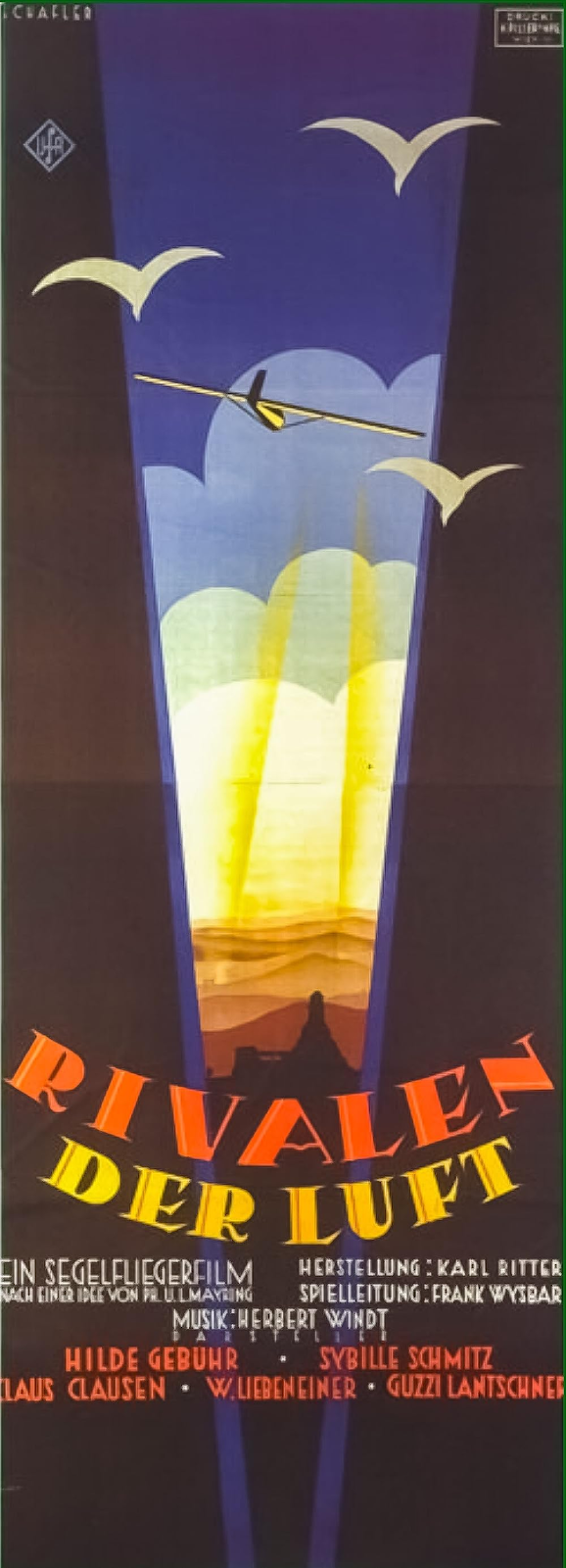


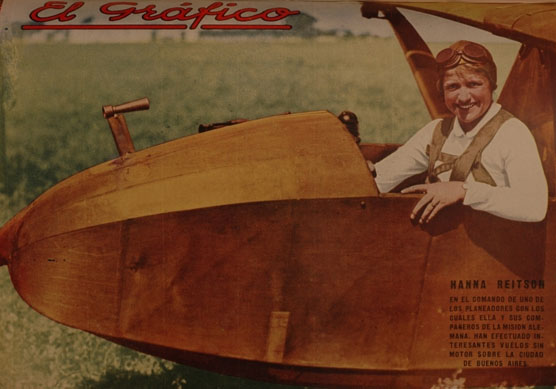

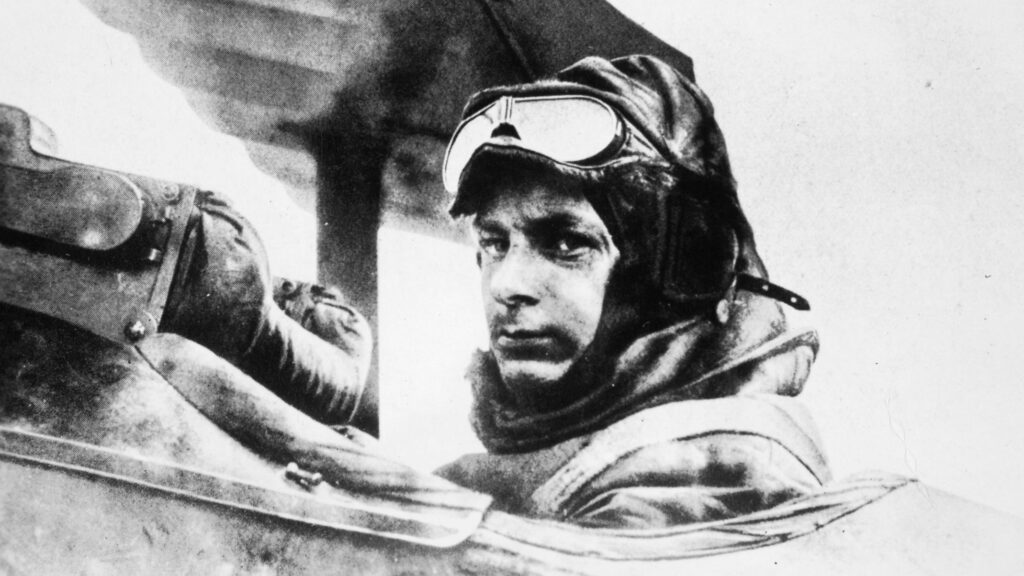

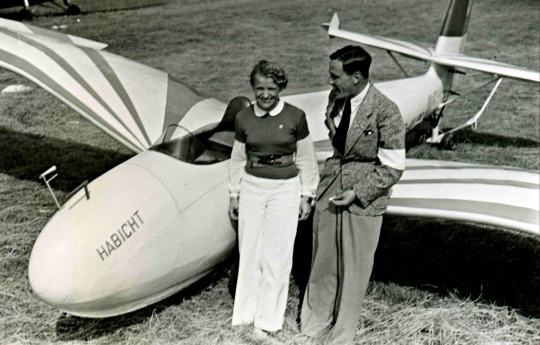





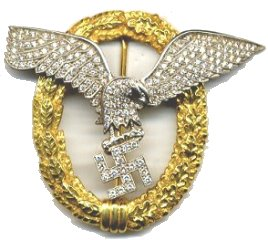



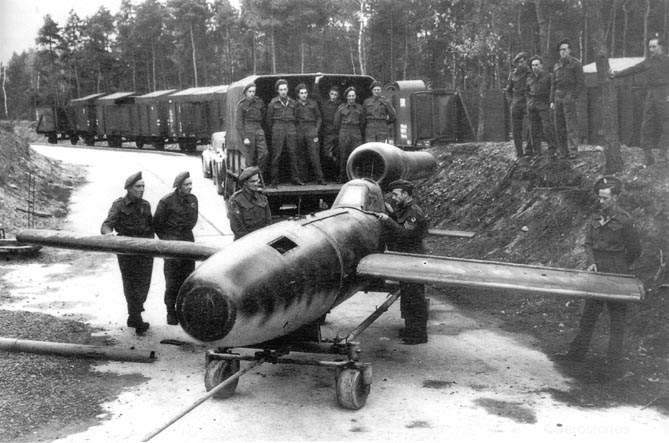








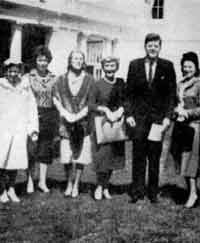
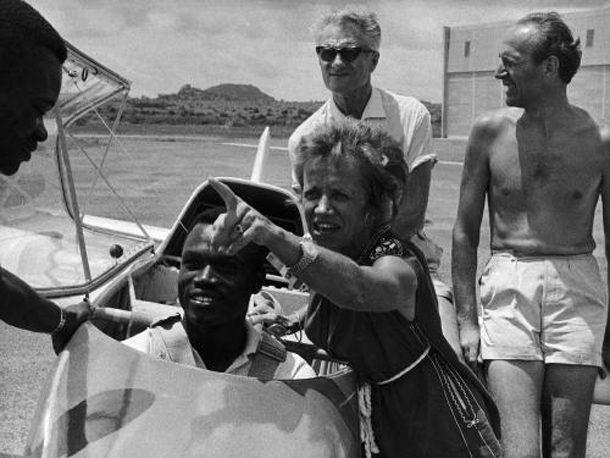


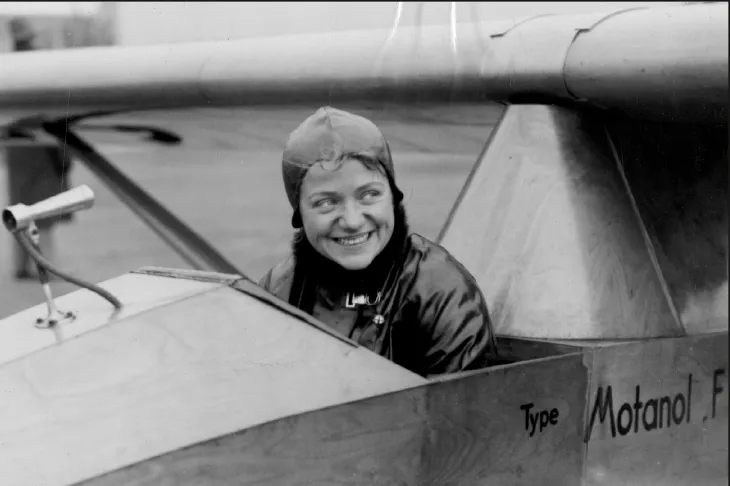


No comments:
Post a Comment